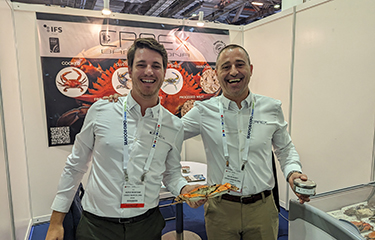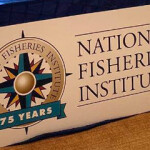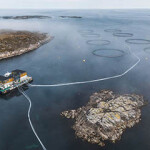Craex developing market for invasive blue crab from the Mediterranean

In the Mediterranean, blue crab have become a problem as the species – native to the U.S. – outcompetes native organisms.
For Barcelona, Spain-based Craex, the invasive species also presents an opportunity to develop a new market. Craex Operations Manager David Benet told SeafoodSource during Seafood Expo Asia – running from 11 to 13 September in Singapore – the company has homed in on blue crab because it's unique in Europe and hasn't historically been consumed in the region.
“It’s a product that is not usual to eat in Europe, so we’ve found a niche space,” Benet said. “We put all our effort in that space.”
Blue crab settled into the Mediterranean in the last decade, and environmental authorities in Europe and North Africa have been working to figure out what to do about the growing problem.
“The fisherman doesn’t know how to take it, and the people don’t know how to eat it, and it’s causing problems,” Benet said.
Craex got its start less than a year ago and has been marketing Mediterranean blue crab as unique.
“The Mediterranean has a salt level higher than other oceans, and in the end, the meat of all the sea life in the Mediterranean has more levels of salt,” Benet said.
Benet said the company has developed a “purification” process through trial and error that helps improve the flavor of the blue crab after they come out of the traps.
“The crabs live on the sand, and when it goes into the trap, it eat something like some meat or chicken that is not in the best condition. So if you take the crab and freeze it, all the sand and all the things it [has] eaten is inside,” Benet said.
Through testing, Benet said he and Craex Business Development Management Adria Montane found that if they use a bespoke purification process, the crab has a completely different smell and taste.
“The first crabs we peeled by ourselves, we smelled it and thought, ‘Oh, it smells good,’” Benet said. “Then we tried to purify it for 24 hours, and then when we peeled it, it looked different [and] it smelled different. Now, we apply that process for all of the crabs that we get - it doesn’t matter if it’s cooked or it's frozen.”
Craex has continued to develop new products to target the European market. Processed crab, he said, has been important to developing the market in Spain as blue crab provides a different eating experience than the crab that many Europeans are used to.
One of the company’s earliest products, he said, was a soft-shell crab, which the company sourced by separating its crab by size and keeping them in holding tanks until they molt.
“This product is going so well in Barcelona [in] fast food [and] street food, and it’s going well. We have big customers for it in Spain,” Benet said.
Craex's frozen half-cut crab, which is treated with a process thathelps eliminate some of the labor involved in peeling and eating the product, is also gaining in popularity, Benet said.
“The European market hates to peel the crabs because it’s dirty,” Benet said.
Other crab species, or shrimp, or lobster, he said, are quick and easy to peel and eat compared to blue crab.
“In that way, we are lazy," he said. "When you give it to a European they say, 'Oh, I don’t like this, I don’t like that piece of meat.'"
Craex's newest product is a crab-stuffed olive.
“We were eating some crabs and we were eating some olives – I live in South Catalonia, so there’s a lot of olives," Benet said. "[Montane] takes a drink of wine and says ‘David, could you imagine if we take an olive and fill it with crab?' I said ‘You’re crazy, who’s going to do that?’”
Within a few weeks, the pair set out to see if the idea was worth pursuing.
“We tasted it and were like, 'Oh my god, this is so good,’” Benet said. “So now we are creating another line of products.”
Photo by Chris Chase/SeafoodSource






Share